

#Serial
What Moved Us, Inspired Us, and Shook Us to Our Core in 2015
Our beloved contributors share the cultural moments and artifacts that most resonated with them this year.
This article was made possible because of the generous support of DAME members. We urgently need your help to keep publishing. Will you contribute just $5 a month to support our journalism?
I won’t mince words: 2015 was an exceptionally brutal year. For every victory—like the SCOTUS ruling on same-sex marriage—we’ve seen huge steps backward, to the point where we wonder if we’re living in a pre-Roe, Jim Crow era, resulting in domestic terrorism like we’ve never seen. The Charleston Nine. The Colorado Springs Planned Parenthood shootings the day after Thanksgiving. More murders of and other brutal acts committed against Black men and women by police than we can count. Abortion- and women’s health clinic closings. Murders of clinic workers. Rising daily casualties from our ever-loosening gun laws. Racist, xenophobic, and Islamophobic speech being spewed by an entire party’s roster of presidential candidates, the hate being stoked by its front-runner, who increasingly resembles the Führer. I can go on and on, but what I want to talk about isn’t the darkness. It’s what emerges from it: inspiration, enlightenment. And first and foremost, I’ve found that from DAME’s writers. Our columnists and regular contributors have guided us through the toughest times with their wisdom, insight, and wit: Stacey Patton, Robin Marty, Kate Tuttle, Rachel Kramer Bussel, Julie Klam, Lily Burana, Sarah Jaffe, Kate Harding, Lisa Butterworth, Linda Chavers, Jaclyn Friedman, Tracey Michae’l Lewis-Giggetts, Sarah Miller, Gina Loukareas, Carrie Borzillo and Laura Bogart. And our essayists and feature writers who put their hearts on the line and fully devoted themselves to their work—I wish I could namecheck them all, but there are too many to name here, which makes me proud that we were able to publish so many. All of these columnists and writers made the personal political and the political personal as they took on police brutality, rape culture, white supremacy, sex and sexuality, LGBT culture, gender, parenting, reproductive rights, gun control, domestic terrorism (by which I mean open-carry “activists” and the Dylan Roofs and Robert Dears and Daniel Holtzclaws of the world), the fight-for-$15, pop culture, friendship and relationships, and so much more. I learned a lot from each of them. I am also inspired by our devoted readers, and my friends who have supported DAME from the get.
I am also blown away by the women who have come forward to testify against those who’ve (allegedly—I hate saying that but for legal reasons …) sexually assaulted them, on the stand, and who’ve shared their stories with us, against everyday civilians, against cops, against celebrities. It is no small thing when those assaulted are almost always put on trial instead of, or in addition to the offenders. And I am awestruck by those on the frontlines of battle: clinic defenders, who fend off anti-abortion activists who intimidate women who have made a choice, or who just want to get health care. And Cecile Richards, who, among other things, had to endure the bullshit of a congressional hearing for fabricated “sting” videos by the deceptively named Center for Medical Progress (bwahahah, gimme a fucking break). And the activists—many, but not all associated with Black Lives Matter—who are tirelessly fighting for the basic human right to, well, not be harassed, raped, brutalized, murdered by the very people who are supposed to protect them. I’m especially inspired by the youth movement in Chicago—my hometown, a corrupt city with one of the most destructive police forces in the nation —who give hope for the future, as they call for Rahm Emanuel’s resignation.
In pop culture: This was the year of Serena. At an age when most tennis players would be wrapping up their career, she had the best season ever. She came thisclose to winning every Grand Slam—four out of five. I mean, holy shit! Still, behold the greatness. She has won 21 EFFIN’ GRAND SLAMS. More than the celebrated Roger Federer. Here is the most incredible, game-changing player in tennis history. And she’s an American. I mean, we’ve gotten behind Andy Roddick and he’s only won, what, one Grand Slam? We should be building a shrine to her. But no. The press has called her and her brilliant sister Venus, the “Williams brothers.” The media obsesses over her gorgeous, powerful body. Critics have posed the question—and way too many times (though once is plenty)—about whether she’s juicing. When she’s rightly praised as the Sports Illustrated Sportsperson of the Year, the L.A. Times wondered if that honor should have gone to American Pharaoh—a horse. Seriously???? You know what I’m gonna say. I don’t have to finish this sentence, do I? SMDFH.
Now, there are two TV series that have my heart completely, one which came to an end: HBO’s criminally underwatched dark comedy Getting On, with Laurie Metcalf, Alex Borstein, and Niecy Nash, among other brilliant actors, about an extended-care facility. A perfect show, beginning to end. And then my love for Amazon’s Transparent was reignited with season two—I devoured it in two sittings, wept through most of it—it’s, as I wrote last week, the queerest, Jewiest, most astonishingly feminist series I’ve ever seen. It also explores narcissism and white privilege in profound ways. I could watch this series repeatedly and discover new layers, truly one of the most culturally important shows of our time.
Recently I’ve been getting into arguments—not combative ones, certainly very interesting—with young people over the excellent film, Carol. Many have found it stilted and don’t grasp its cultural importance. (OK, so it lacked the scissoring sex scenes of Blue Is the Warmest Color, sorry kids. Ugh, that film was just silly, and felt as long as … Shoah.) It resonated for a lot of other queer people I know who are around my age or older, so I do think it’s generational. For those of us who lived through a time when coming out was a big deal, who had to make the kinds of choices that Carol Aird did—choosing between love and motherhood—of having to risk everything for a love that was forbidden, well … it just wasn’t that long ago that homosexuality was no longer considered a psychological disorder—and now, in 2015, there are still people who send their kids to gay-conversion therapy. Fifteen, even ten years ago, same-sex marriage wasn’t even something we considered a possibility. When I first moved to New York, in 1992, the obituaries were filled with death notices of young men dying of “meningitis” and “pneumonia”—AIDS-related illnesses that the family would refuse, out of shame, to name as AIDS (though we all knew). Men were outed by their obits. I never expected I’d get to have a female partner—a spouse, no less—and be a mother too. And here I am. Over the summer, I re-read the novel on which the film is based, Patricia Highsmith’s The Price of Salt—I’d read it 20 years earlier—and felt the film captured much of what I’d taken away from it the second time around.
I’m sure I’m forgetting a million things, but I gotta wrap this up. What I really want to say, what I’m most inspired by and extremely grateful for, is you, dear readers, and for our writers, who share their own inspirations below. Happy holidays, and warmest wishes for a happy New Year and better times ahead!
Kera Bolonik, Executive Editor

The Hunger Games have been a constant in my life since I first read the books back in 2010 (I distinctly recall ugly-crying at Rue’s death in an office break room); I have felt a bone-deep sympatico for the nature-loving survivalist turned shell-shocked survivor and reluctant figurehead of a national rebellion. Katniss’s strength isn’t a superhero’s impenetrability, it is in her ability to keep fighting on, even when she feels hopeless and broken. The Hunger Games movies have done right by their source material, especially in casting the brilliant Jennifer Lawrence as The Girl on Fire. Lawrence’s Katniss is brittle and wry, full of righteous fury that is balanced (but never tempered) by regret for all of the violence she’s endured—and doled out. Mockingjay is arguably the most controversial of the novels, but I think also the most complex, and this complexity has translated powerfully on-screen. It asks hard questions about war and ethical violence, questions that remain all-too-relevant off-screen.
Mockingjay-Part Two, like all of the movies in the franchise, does truly radical things with gender. Much has been made of Peeta, the baker’s son, as Katniss’ ideal “movie girlfriend” and Katniss as the warrior who must protect him. But the movie doesn’t just celebrate Katniss’s badass acts of valor, it also values patience and love: Katniss does not save Peeta from his torture and hijacking in The Capitol by loading her bow; she must show him compassion–and, in proving that she is capable of that compassion, she helps to heal herself. Every year for the past four years, I have enjoyed the marketing blitz that accompanies the latest Hunger Games movie, and Mockingjay—Part Two was no exception: This year’s campaign was built on images of a woman as champion and leader, images that feel especially vital now, as women’s bodily autonomy is increasingly under attack. I admit freely to blubbering during the final 20 minutes of Mockingjay—Part Two, not only because of the events on-screen but because I was beginning to realize how deeply I am going to miss Katniss Everdeen. And so I offer her my own three-fingered salute: “It means thanks, it means admiration, it means goodbye to someone you love.”
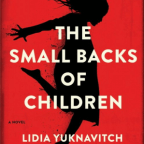
Like so many of us, I became obsessed with Marvel’s Jessica Jones on Netflix. And I also loved Lidia Yuknavitch’s The Small Backs of Children—this book is difficult to describe in part because it is so physical and that’s a good thing. Her writing gets to the meat of things about sex, sexuality, violence, and art. Very powerful and moving, best thing I read all year.
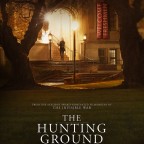
I can’t stop listening to the Hamilton soundtrack, and I can’t stop sobbing my way through the last quarter. The music and lyrics are phenomenal, sure, but I keep coming back for Eliza, best of wives and best of women: her strength, what she was made to suffer, how she managed to forgive, everything she accomplished on her own after Hamilton left her penniless. Phillipa Soo’s performance breaks my heart. Where is my Eliza Schuyler Hamilton musical? Who tells her story?
I’m also in awe of the rape survivors who stood up in the white-hot media spotlight this year, whether they’re the survivors of famous and powerful men like Cosby or James Deen, or those who stood up to entire abusive systems, like the women and men featured in the documentary, The Hunting Ground or the young woman at the center of The Marshall Project’s incredible story, “An Unbelievable Story of Rape.” At great personal cost, their bravery (and their strength in numbers) is literally changing the world.
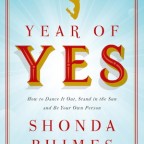
The memoir, Year of Yes: How to Dance it Out, Stand in the Sun, and Be Your Own Person by Shonda Rhimes totally and completely spoke to me as working mom who is also a creative. And as a writer, there were two things that resonated with all the things I wrestle with as I try to put forth my best work in multiple formats: The first is Kiese Laymon’s essay, “Da Art of Storytellin’ (A Prequel),” published in the Oxford American, which set me free. As he explains the influence hip-hop group Outkast had on the development of his own voice, his words allowed me to cast my fear into the ocean of “unbothered and unbossed” and embrace my own brand of Kentucky-born “stank” that makes my voice uniquely mine. And the other concerns another aspect about my work, which has been about the intersection of faith and spirituality with culture—race, in particular. As a person of faith, and a follower of Jesus, this year, my stomach would curdle on cue when I observed how perverted my faith became in the mouths of people like Kim Davis. How it was pimped by folks like Donald Trump and his field hands—yep, I said it—in order to perpetuate xenophobic foolishness. So this year, Austin Channing Brown’s blog post, “Let Justice Roll” was like a balm to my soul. It was a “Saints, Pick a Side!” clarion call that helped me see that my heart for justice wasn’t some anomaly; that it was very much in alignment with the true tenets of my faith.
There’s much, much more: Erykah Badu’s But You Can’t Use My Phone? Yes, please. And DAME’s own Stacey Patton, whose relentless pursuit of truth in Every. Single. Piece. she writes? No doubt. And as a Black girl wrestling with what it means to take care of her own mental and emotional health, Samantha Irby’s essay, “Black Girls Don’t Get to Be Depressed,” punches the hurtful narrative by the same title in the throat. Thankfully.
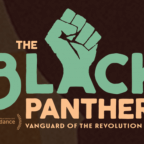
Most of my “favorites” this year were intensely personal. My favorite moment was probably sitting in a church in Ferguson, Missouri, observing the People’s Movement Assembly last spring, and being thankful that people trust me enough to let me, a journalist from New York, join some of those moments. Naming a favorite movie or favorite book feels somehow inadequate to what’s actually going on in the world, even though the books and movies I loved (the new documentary, The Black Panthers: Vanguard of the Revolution, the science-fiction-for-revolutionaries collection Octavia’s Brood, which I’m poring over now) were certainly deeply relevant. I tried to think of a favorite action but as I was considering, I clicked on this video of a die-in of medical students in Chicago in protest of the cover-up of the police killing of Laquan McDonald and realized there would be too many to name. I loved watching Walmart workers confront the CEO of Walmart at the company’s shareholder meeting in Bentonville, Arkansas, and while I didn’t love waking up at 5 a.m. to be there, I loved joining Atlanta fast-food workers on the picket line at a Burger King before sunrise in April. I loved reading that the football team at the University of Missouri had gone on strike, refusing to play until their school was accountable for the racism they faced. My favorite thing about this year was that it felt more than ever as if change was coming, that all of the movements that have sparked in the past several years are growing and coming together, that despite all of Donald Trump and his acolytes’ attempts to pull us backward, that we are still, somehow, winning this fight.

This was the year I became a ravenous consumer of podcasts. I’ve always been a fan, but the addictive nature of Serial had me searching high and low to get my fix. In no particular order, here are my favorite podcasts of 2015: Ronna & Beverly, Limetown, Crybabies, After Smash, Gilmore Guys, Death, Sex and Money, The Mental Illness Happy Hour, Criminal, Hardcore History, Common Sense, You Must Remember This, and Re/code Decode.

This year my boyfriend, Dan, moved in with me and I began watching the X-Files, to prepare for January’s new six-episode reboot mini-series. I think I’d watched it a couple of times back in the day, and I always wanted to like it but I didn’t. Dan carefully curated the episodes I watched and I became a complete addict (and yes I do have an I WANT TO BELIEVE shirt)!!

My favorite movie of the year, and indeed the only one I really even remember watching or thought about afterward, was Ex Machina. I know some viewers interpreted the story and its outcome as misogynist. While I wouldn’t go so far as to call these interpretations wrong, I saw it in quite a different way: It was a story about “bad” sexist men (Oscar Isaac) who want to cut you into pieces, and “good” sexist men (Domhnall Gleason) who would never hurt you, because they “love” you so much, because you’re so hot, and blank, and so easy to project onto. In the end, our protagonist (Alicia Vikander) decides to destroy both men, because they both suck equally. I haven’t been so exhilarated by a movie since I saw Chariots of Fire when I was 11.
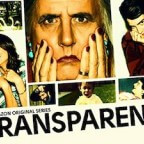
It was a historic year for the trans community to be represented on TV. The year began with Amazon’s Transparent becoming the first streaming series to win two Golden Globes (and, later, five Emmys), and wrapped up with VH1’s Couples Therapy With Dr. Jenn airing the first trans marriage in December when trans model Carmen Carrera wed Adrian Torres.
On ABC Family’s Pretty Little Liars, the identity of antagonist known as “A” shocked viewers when they revealed her to be a trans woman. This summer, the network debuted the reality show, Becoming Us, which follows a family with a trans parent. Four other networks have also helped audiences understand gender identity this year. Bruce Jenner’s transition to Caitlyn Jenner being introduced on E!’s mega-hit Keeping Up With the Kardashians, followed by her own reality show, I Am Cait. CBS’s The Bold and the Beautiful became the first U.S. soap opera to feature a trans woman character as a series regular when they revealed this year that Maya Avant (played by Karla Mosley since 2013) was born a male. TLC debuted I Am Jazz, which documents a 14-year-old trans girl named Jazz Jennings and her family. Whether this acceptance translates to real life remains to be seen, but it begins here, in the culture, and this is a huge step forward: I am impressed by the small-screen power players for helping to bring understanding, compassion, and acceptance to a community long plagued by fear and hate.
Before you go, we hope you’ll consider supporting DAME’s journalism.
Today, just tiny number of corporations and billionaire owners are in control the news we watch and read. That influence shapes our culture and our understanding of the world. But at DAME, we serve as a counterbalance by doing things differently. We’re reader funded, which means our only agenda is to serve our readers. No both sides, no false equivalencies, no billionaire interests. Just our mission to publish the information and reporting that help you navigate the most complex issues we face.
But to keep publishing, stay independent and paywall free for all, we urgently need more support. During our Spring Membership drive, we hope you’ll join the community helping to build a more equitable media landscape with a monthly membership of just $5.00 per month or one-time gift in any amount.


















































































